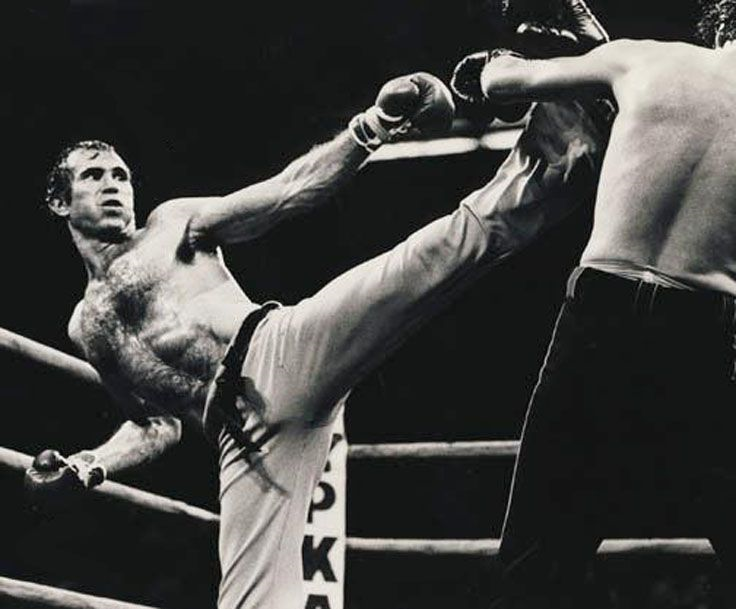When someone says that they’re a boxer, you know exactly what they do. They box. whether it be at the amateur or professional level, you know that they wrap their hands up, step into a ring, and trade blows for a significant amount of time.
When someone says that they’re a kickboxer, there’s a lot more of a grey area. They could be anything from a karateka to a Thai boxer.
Quite rarely is a kickboxer actually a ‘kickboxer’. Those who practice the full contact stuff, or American kickboxing, the style that has fallen behind its peer rulesets in popularity.
It’s fair, the K-1 style of kickboxing drives a high pace and rewards constant aggression, it’s a spectacle to see fighters chucking Dutch style combinations and leg altering low kicks at each other for nine minutes.
The Thais know how to make a fight fun to watch too, with seemingly tiny men rattling bizarrely powerful kicks (because they’ve been kicking since age three) off of their opponents bizarrely powerful frames (because they’ve been getting kicked since age three). Seeing someone get dumped on to their head from a sweep or a clinch toss is quite entertaining too.
Full contact has suffered from questionable rulesets as well as a lack of exposure at the professional level.
It’s a shame, full contact has a great history, it creates incredibly dexterous and mobile fighters and it produces fun fights. It’s doing great at the amateur level at least, everywhere you look there’s WKA tournaments, ISKA tournaments, WKO tournaments.
The thing is, once fighters have done their time in the amateur ranks, they’ll find themselves stuck for options as professionals, more often than not turning them to K-1 where a living can be made at the top levels. Or they’ll try their hand at boxing, maybe even Mixed Martial Arts, where a fortune can be made at the top level.
There’s so many examples of this, Stephen “Wonderboy” Thomson and Uriah “Primetime” Hall, two wildly different styles of striking both forged under the kickboxing ruleset. “Mr. Perfect”; Ernesto Hoost spent some of his early career competing in full contact before he went on to have a great career in K-1. Vitali Klitschko had a 34-and-2 record in full contact kickboxing before he became a professional boxer as well.
Ironically, another reason for the mass emigration from full contact kickboxing sounds awfully similar to the reason for its creation.
Full Contact came into play as a result of the US karate circuit in the late 1960s. Fighters where growing tired of point fighting and on January 17, 1970 the first bout under the ‘full contact’ ruleset took place between Joe Lewis (no, not that one) and Greg “Om” Baines.
In this form, punches, kicks, knees, elbows and sweeps where legal (basically two karate stylists fighting under Muay Thai rules). Lewis, a student of Bruce Lee, won by second round knockout.
Over the years the rules where refined and the sports modern form took shape. That Being boxing with kicks to the body and head, but not to the leg, foot sweeps, and of course knockouts or judges’ decision rather than a point scoring system.
Some of the rulesets that were developed hurt the style greatly. Rules that favoured quantity over quality fighting, most prominent of these rules which many organisations ran with was the rule where you had to throw a certain amount of kicks per round, leaving fighters worrying about meeting their kick requirement rather that their overall performance.
This likely dented full contact Kickboxing’s reputation to the point where it was relegated to the amateur ranks with little opportunity to make a living. You would see fighters touch gloves at the beginning of the round, quickly spamming as many kicks as they had to, then they would usually box for the rest of the round. This didn’t make for entertaining fights.
Another glaring hole in full contact kickboxing was the lack of low kicks. While these American style kickboxers usually had outstanding footwork, a lot of the time it could be negated with low kicks due to the wider more karate like stance that the fighters held.
This was famously outed when Rick Roufus, a kickboxing legend, faced Muay Thai boxer Changpuek Kiatsongrit in a modified rules bout that resembled K-1 rules.
While Roufus’ boxing and footwork proved effective against Kiatsongrit, the Thai remained composed, focused solely on chopping down the American kickboxer’s lead leg.
Slowly, kick by kick, the then undefeated Roufus became less mobile as his means of movement was taken away from him. Roufus was stopped in the fifth round by low kicks.
While many full contact fighters, including Rick Roufus’ younger brother Duke, went off to Thailand to learn about low kicks, as well as knees, elbows and the clinch, the ruleset did not change, and therefor became outdated.
It was not much later that the legendary Japanese promotion K-1 (and subsequently the K-1 style of kickboxing) began to boom, heralding a new era of kickboxing that pitted styles against each other.
K-1 plucked out many high-profile full contact fighters, taking the talent away from the professional level.
As mentioned earlier, today the full contact style has certainly lived on, with many successful crossovers into other sports. However full contact itself, at a professional level at least did not grow when growth seemed necessary, causing it to lose out on the limelight in our current world of combat sports.







